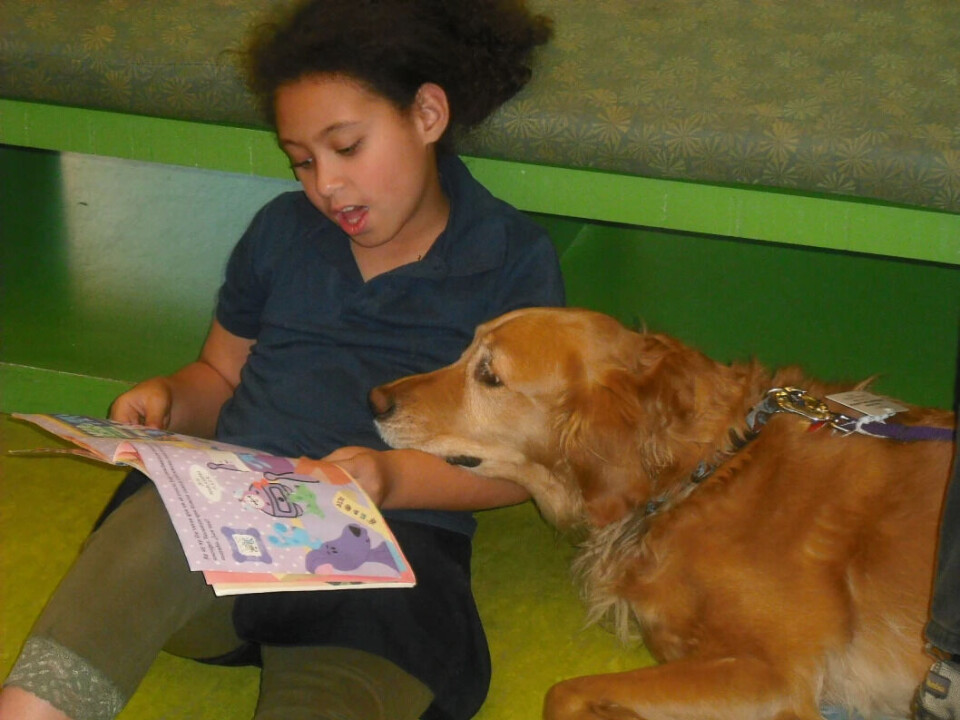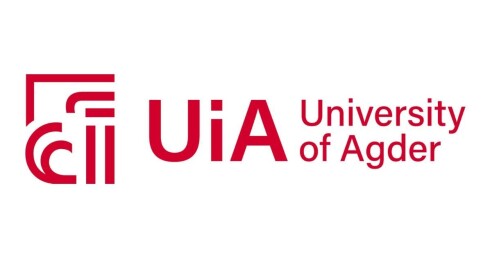THIS CONTENT IS BROUGHT TO YOU BY THE University of Agder - read more

This is what happens when children read to a dog
Having a reading dog in school provides a range of positive effects for the pupils. Why does it work so well?
When children read to dogs, they experience reduced stress and enhanced concentration. They become better readers, they become more persistent and motivated, and they experience a greater sense of achievement.
“Reading dogs have a positive effect in school. The children are also very content and feel they are getting better at reading. In the past, this has largely been explained by the secretion of the hormone oxytocin, but we think this explanation is a bit too simple,” Andreas Reier Jensen says.
He believes the phenomenon has more to do with the dog’s non-judgmental and welcoming nature, which makes it what he refers to as ‘a pedagogical agent’ for the child. A reading teacher, simply put.
Jensen is an associate professor at the Department of Education at the University of Agder (UiA). Together with Professor Ilmi Willbergh, he has written the article The Dog as an Unaware Pedagogical Agent in a School Reading Course.
The researchers followed a group of school children for seven months and studied video recordings of 224 reading sessions with a dog.

A special connection with dogs
“Large mammals are similar enough to humans for us to get attached to them, yet still so different from us that we don't feel shy around them,” Jensen says.
When the pupils read to the dog, they have to pretend that the dog can understand them in order to get the most out of the situation. They perceive the dog as an individual capable of communication, but they are also fully aware that the dog does not understand the words they are reading to it.
“Play is important for children's learning. We call the dog an unaware pedagogical agent in this situation,” Willbergh says.
Through evolution, dogs have developed a unique ability to communicate with humans, different from other animals. When pupils can maintain eye contact with the reading dog, and even give it a high-five at the end of the reading session, they experience a connection with another living being, and it adds a touch of humour. This makes the reading experience especially meaningful for the pupils.
The researchers noted that it was necessary for the children to engage in the role-playing aspect with the dog as a listener.
“The children who showed no particular interest in the dog might just as well have read to another person,” Jensen says.
Pretending the dog understands
“Since the reading session takes place at school, the pupils know what is expected of them. And that expectation is strong enough for them agree to the premise of pretending that the dog understands the story,” Willbergh says.
Anthrozoology is an interdisciplinary field that studies the communication and interactions between "humans and other animals", as Jensen puts it.
“In Western tradition, there has been a separation between man and nature, the consequences of which we are now witnessing with the ongoing environmental crisis. It's therefore time to reconsider our relationship with nature. This is the first study that combines pedagogy and anthrozoology, and where it is seen in the context of the school as an institution,” he says.
Reference:
Jensen, A.R. & Willbergh, I. The Dog as an Unaware Pedagogical Agent in a School Reading Course, Anthrozoös, 2023. DOI: 10.1080/08927936.2023.2232657

This content is paid for and presented by the University of Agder
This content is created by the University of Agder's communication staff, who use this platform to communicate science and share results from research with the public. The University of Agder is one of more than 80 owners of ScienceNorway.no. Read more here.
More content from the University of Agder:
-
The law protects the students. What about the teachers?
-
This researcher has helped more economics students pass their maths exams
-
There are many cases of fathers and sons both reaching elite level in football. Why is that?
-
How we used plants to protect ourselves from evil
-
What is it like for nurses to promote health behind bars?
-
This can make life easier for new maths teachers




































